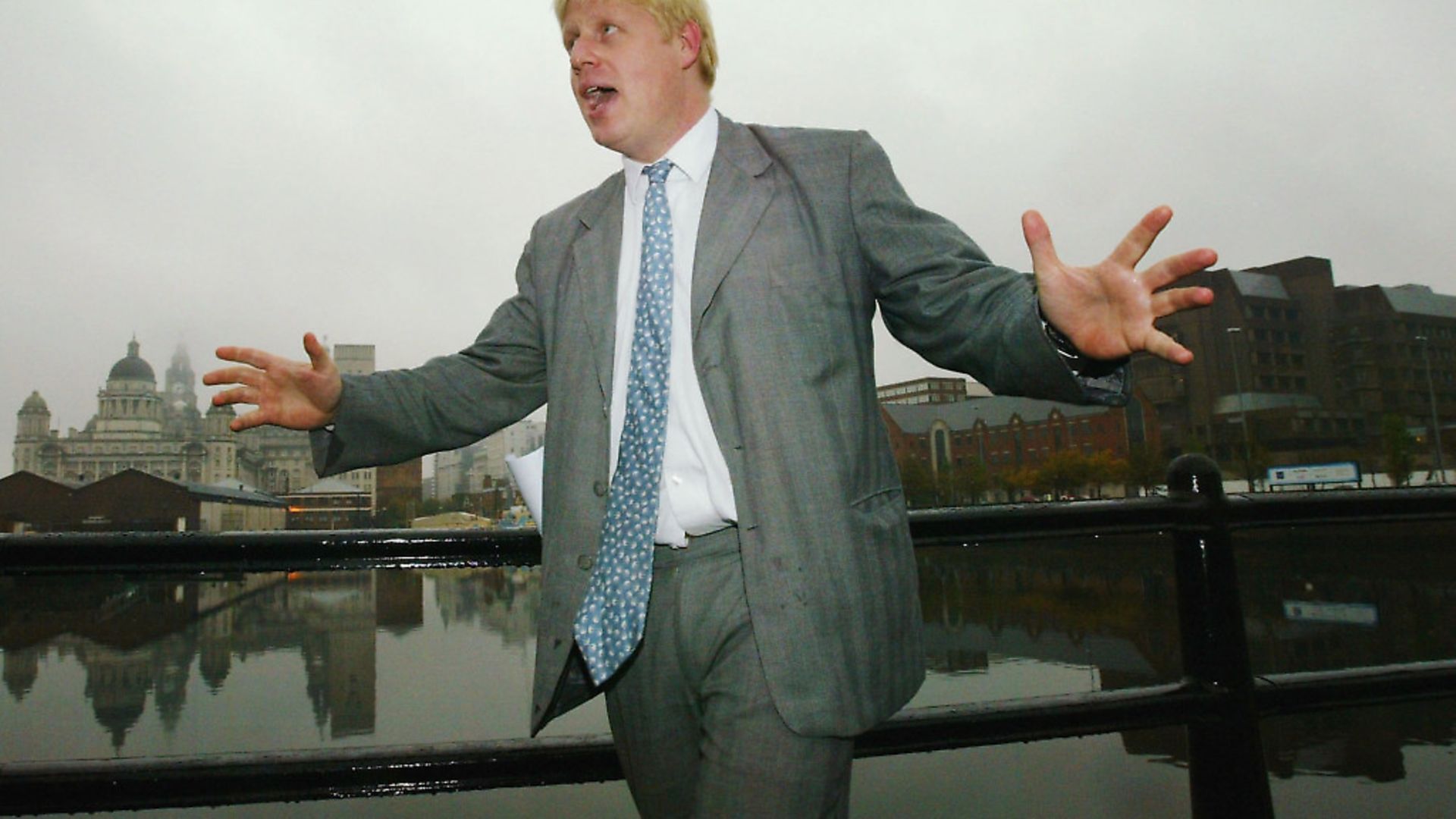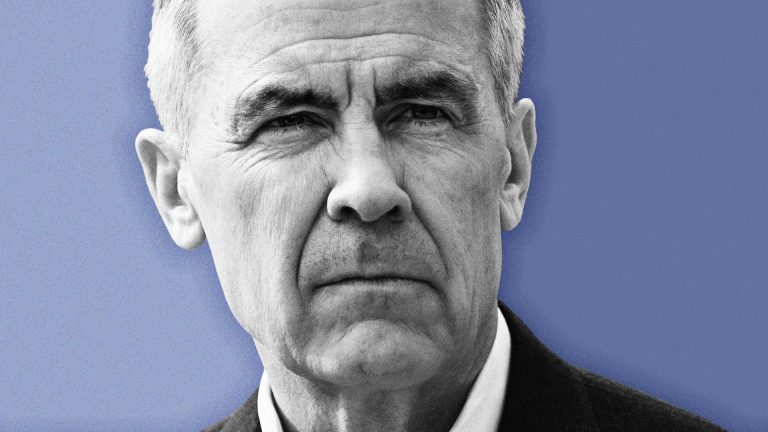
GABY HINSLIFF on the links between Number 10 and the conservative magazine
When Boris Johnson travelled to Merseyside earlier this month for one last attempt at salvaging a Brexit deal, he did so trailing a ghost from the past.
Fifteen years ago, as a shadow minister serving under Tory leader Michael Howard, he was sent to Liverpool to apologise in person for an offensive Spectator magazine editorial accusing the city of wallowing in victimhood over the murder of hostage Ken Bigley in Baghdad.
Johnson did not himself write the piece, which recycled discredited allegations about Liverpool fans during the Hillsborough stadium disaster and accused Liverpudlians of refusing to accept responsibility for the city’s own problems. But, as editor of the magazine, he published it, and the ensuing outrage was deemed so damaging to Tory prospects in the north that Howard made him publicly eat his words. To this day, the subject remains sore. When the Liverpool MP Maria Eagle raised it across the dispatch box recently, Johnson swiftly changed the subject.
Yet the Spectator years keep returning to haunt the prime minister, and not just because of the journalist Charlotte Edwardes’ claim that back in 1999 he squeezed her inner thigh under the table at one of the magazine’s famously boozy lunches – a claim Johnson denies.
If David Cameron was caricatured as the ‘essay crisis’ prime minister, then the man who may have produced a Brexit deal at the political equivalent of a minute to midnight (and arguably only by reneging on promises not to create a border in the Irish Sea) remains in many ways the editor who prided himself on swooping in to save the day only hours after the deadline had passed. “Production people would be tearing their hair out and he’d be saying ‘ah, but I always deliver in the end’,” recalls a former Spectator writer. It remains to be seen if that will be true this time.
But it was also at the Spectator that Dominic Cummings – now special adviser to the prime minister, but then in charge of creating an online presence for the magazine – got his first chance to play around with new media. Tory bloggers like Iain Dale, Paul Staines of Guido Fawkes, and ConservativeHome founder Tim Montgomerie were already pioneering something new in political journalism, using the web to break into what had previously been rather a closed shop – and in Staines’ case to push the boundaries of what could legally be published. Cummings, who had briefly worked for the Conservative Party before resigning in frustration that his radical ideas weren’t adopted, fitted the somewhat Wild West spirit of the times.
For anyone who remembers the Spectator of this era, there is something very familiar about the political chaos unleashed since Johnson and Cummings entered Downing Street. Then, as now, the regime delights in using inflammatory language and ideas to make a splash, falling back indignantly on arguments about free speech when accused of going too far.
Then as now, it seemingly sees rules as made to be bent, proroguing parliament for what the Supreme Court ruled were unlawful reasons and threatening to drag the Queen into attempts to thwart a vote of no confidence. When Brexit talks appeared to be breaking down, and a senior Downing Street source widely thought to be Cummings chose to respond with wild threats of retaliation against the EU, it was the Spectator’s political editor James Forsyth who got the scoop.
“The Spectator website under Dom’s control was like his personal stream of consciousness,” recalls a former magazine staffer. “He liked picking fights.” The most striking of these involved linking to an offensive cartoon of the prophet Mohammed, whose publication by a Danish paper in 2005 had provoked outrage across the Muslim world.
Cummings’s publication of the images was accompanied by a rambling text arguing that “as European populations die and Muslim populations grow, and as more and more European students are taught Foucault and ‘literary critical theory’, the balance of power shifts every day; meanwhile Britain’s comic political class cannot even control Islamic terrorists when they finally lock a few up in prison”. The cartoon was removed after deputy editor Stuart Reid intervened, but presumably not without Cummings learning something about pushing boundaries.
And that was what, in those days, the Spectator did. Visitors to the house on Westminster’s Doughty Street from which it operated might find a ping-pong table in the garden, a dog running around, and half-empty bottles of wine on the desks (the drinking began at lunchtime and sometimes ended in late-night lock-ins at the pub). It had never been a conventional place to work – under previous editor Alexander Chancellor, the wine flowed freely at lunch and writers would nap on the sofas – but Johnson brought both a sharper political edge and a blurring of professional lines. “The thing that rings a bell for me (now) is the sense of massively entitled anarchy,” says a former columnist, who recalls the magazine under Johnson as a “disorderly and disorganised” place.
And if it all sounds thrillingly bohemian, then it had its seedy side. Johnson’s in-house affair with the writer Petronella Wyatt, and his attempts to deny she had had an abortion as a result, led to him being sacked from the opposition frontbench. The then Labour home secretary David Blunkett had to resign when it emerged that the magazine’s publisher Kimberly Fortier, with whom he was conducting a secret affair, had asked for his help with her Filipina nanny’s visa problems.
Rachel Royce, whose marriage to the Spectator’s Rod Liddle broke down over his relationship with the 22-year-old office receptionist, accused Johnson of running the place “like a knocking shop”. People got hurt. Private and professional interests collided. But sales held up, and Johnson’s celebrity helped sustain the magazine’s profile throughout the New Labour years when it could easily have dwindled into irrelevance.
And then, as now, Johnson’s approach was to swoop in and save the day only at the last minute, when his staff were starting to panic.
These days, the boozing and bedhopping are gone, replaced by a more conventional workplace culture under current editor Fraser Nelson. Yet the Spectator and its former editor remain symbiotically close to each other’s thinking, and to understand one is to better understand the other. As Theresa May was to the Daily Mail, whose solidly respectable middle England values she embodied, so her successor is to the magazine’s racier and more libertarian brand of conservatism.
The connections are personal (Cummings is married to the magazine’s commissioning editor Mary Wakefield, and has been friendly with Nelson since the 2000s) and ideological. Nelson has described the prime minister as “a liberal in the way that the Spectator is liberal… his values are very similar to the magazine’s values”. Both stand for a swashbuckling version of Brexit based on dreams of sovereignty and free trade, plus a willingness to take risks, and a belief that nothing is unsayable.
There is another model for this government-by-journalism. The administration of George W Bush – with all its vision of spreading democracy around the world by force if necessary – was hugely shaped by the editorial line of the Weekly Standard. The small but influential neo-con bible was run by Bill Kristol, a former chief-of-staff to vice president Dan Quayle in Bush senior’s White House, and was required reading for Dick Cheney, Donald Rumsfeld and Paul Wolfowitz in the Bush administration. Contributors included the hawkish John Bolton – who was made ambassador to the UN by Bush. Weekly Standard contributor David Frum became Bush’s speechwriter, and is credited with the “axis of evil” phrase which put Iran, Iraq and North Korea in US sights.
The Spectator has long battled what it regards as the politically correct policing of language, nanny state measures constraining personal liberties, and now the identity politics of ‘woke’ millennials – culture wars all in vogue inside Downing Street.
One indication of how far things have flipped is that, when Theresa May was still in Number 10, the magazine responded to her promised “race audit” of discrimination in Britain with a scathing article arguing that the impact of racism was in some cases exaggerated by politicians. Its author, Munira Mirza, now runs the Downing Street policy unit while May is critiquing immigration policy from the backbenches.
It wasn’t hard to guess who May had in mind when she responded to the recent Queen’s Speech by warning that “the best headlines and the greatest oratory and the most arresting phrases” are worth nothing unless they change lives. But if she hoped to convince Boris Johnson that what works for journalists doesn’t translate to writing the national story in government, she may have an uphill task ahead of her.
– This story was first published by Tortoise. Copyright Tortoise 2019. To read more slow journalism from Tortoise, become a member for £50 instead of £250 at tortoisemedia.com/friend and use the code “TNE50”. Or, get 13 weeks of The New European and one year’s Tortoise membership, all for just £25.









